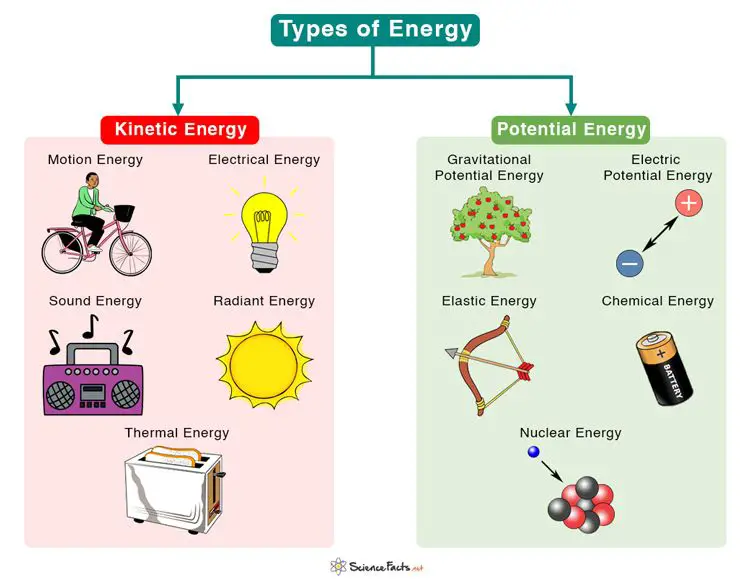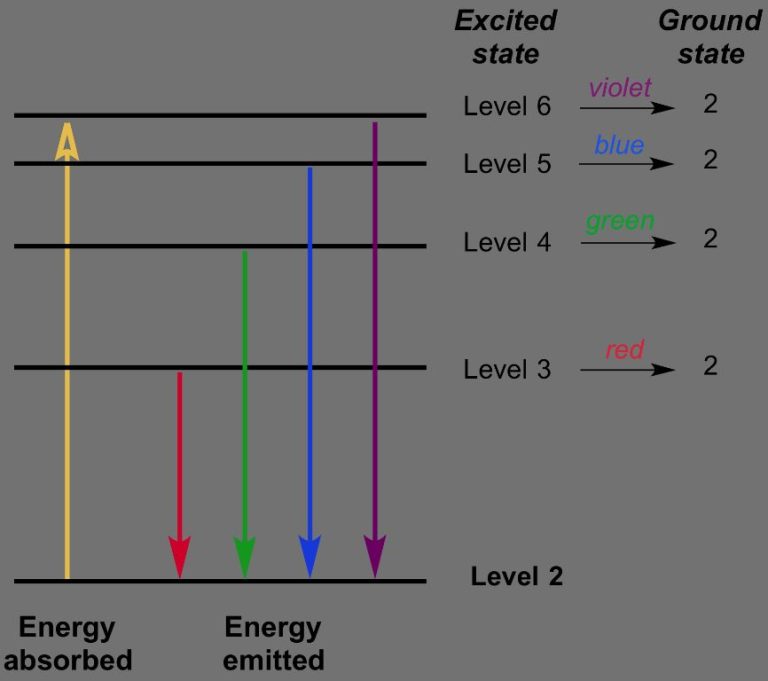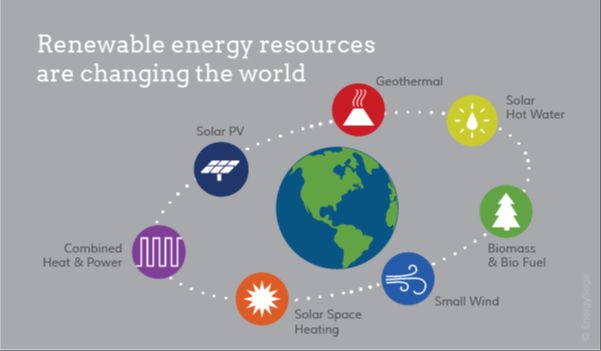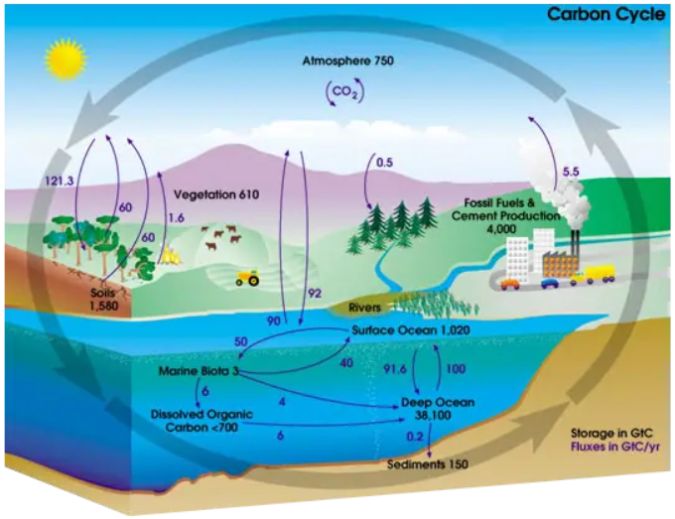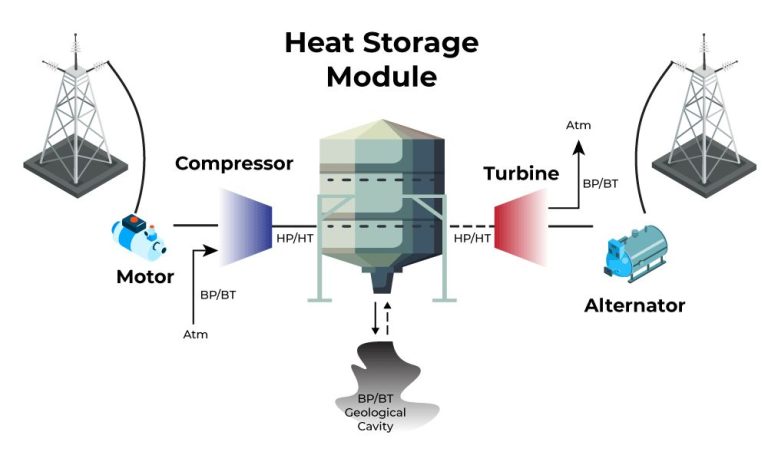How Does Electric Current Travel?
What is Electric Current?
Electric current is defined as the flow of electric charge. It is a movement of electrons through a conductor like a wire or cable. Electric charge is carried by subatomic particles called electrons and protons. Electrons have a negative charge, while protons have a positive charge.
In metals and most other conductive materials, electric current is due to the flow of electrons. Metals contain many loose or “free” electrons that can move easily. When voltage is applied, these free electrons flow in the same direction, creating an electric current.
Electric current is measured in amperes or amps for short. One ampere is equal to 6.24 x 10^18 electrons (1 Coulomb per second) passing a given point. Current is the rate of flow of electric charge.
Flow of Electrons
Electric current is caused by the flow of electrons through a conductor. Electrons are tiny negatively charged particles that orbit the nucleus of an atom. Metals are good conductors of electricity because they have many loosely bound electrons that are free to move around. When connected to a battery or other power source, these free electrons will flow from the negative terminal to the positive terminal. The excess electrons at the negative terminal are repelled and pushed through the wire towards the positive terminal, which has a deficiency of electrons. It’s the organized motion of these electrons that makes up the electric current.
Conventional Current Direction
Conventional current flows from positive to negative, which is the opposite direction of electron flow. Electrons have a negative charge, so they flow from negative to positive. However, for simplicity, electrical engineers define current as positive charge flow, so the current flows in the opposite direction of the electrons.
This conventional current model was established before the discovery that electrons carry a negative charge. Although scientists now know that electrons flow from negative to positive, conventional current direction continues to be used for simplicity and consistency in circuit analysis and electrical device design.
Using conventional current allows various electrical calculations and component behaviors to have positive values, which is more intuitive. Otherwise, many equations would require negative signs to account for electrons’ negative charge. While the conventional current direction is an abstraction and does not reflect real electron flow, it provides a consistent system to analyze circuits.
Through Wires
Electric current flows through conducting wires made of materials like copper or aluminum that have free electrons. The free electrons in the metal atoms can detach easily and move through the wire carrying energy and charge.
Metals like copper and aluminum have a crystalline structure that allows electrons to move freely, which makes them good conductors. The free electrons flow through the wire from areas of negative charge towards areas of positive charge.
In contrast, insulators like plastic and rubber have tightly bound electrons that cannot flow freely. Their molecular structure inhibits free electron flow, so they do not conduct electricity well. Current will not easily flow through an insulator, making them useful for coating wires and cables.
Electromotive Force
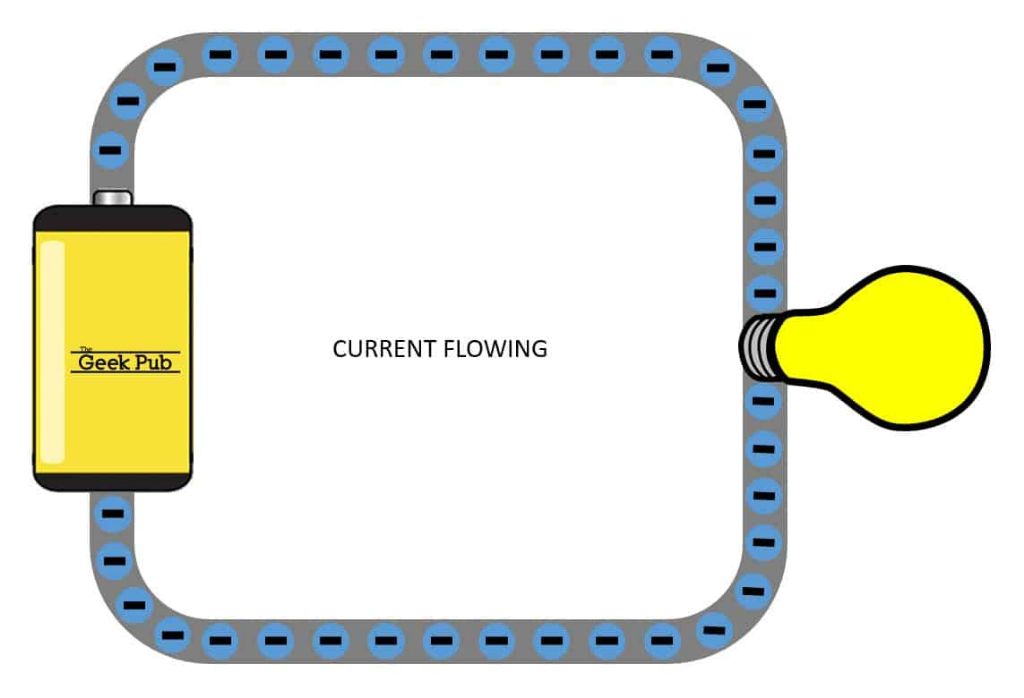
Electromotive force, also called voltage or potential difference, is what causes electric current to flow in a circuit. It provides the “push” that moves electrons through the wires and other conductive elements. This force is generated by batteries or other power sources in the circuit.
Batteries contain chemicals that undergo reactions to produce voltage. This voltage causes negatively charged electrons to move from the negative terminal, through the circuit, and back to the positive terminal. So batteries provide the electromotive force needed for current to flow.
Electromotive force is measured in units called volts. Higher voltage enables more current to flow. For example, a 1.5V AA battery produces less current than a 9V battery in the same circuit. Voltage plays a key role in determining the strength of the current.
Resistance
Resistance is an electrical component that opposes the flow of electric current in a circuit. Resistance is caused by collisions between the flowing electrons in a conductor and the atoms that make up the conductor material. When electrons flow through a conductor, they bounce off the atoms in the material. This bouncing slows the flow of electrons down, limiting how fast current can flow.
The amount of resistance in a given conductor depends on a few key factors:
- The material composing the conductor – materials like copper have low resistance, while rubber has high resistance
- The physical dimensions of the conductor – longer and thinner conductors have higher resistance than shorter, thicker conductors
- Temperature – resistance increases with increasing temperature in metals
Resistance is measured in units called ohms, represented by the Greek letter omega (Ω). Materials with higher resistance require larger voltage differences to achieve the same amount of current flow. Adding resistance to a circuit reduces the current that flows for a given applied voltage.
Ohm’s Law
Ohm’s law describes the relationship between current, voltage, and resistance in electrical circuits. It states that the current (I) flowing through a conductor is directly proportional to the voltage (V) applied across it, and inversely proportional to its resistance (R). This can be summarized by the following equation:
I = V/R
Where:
- I is the current in amperes (A)
- V is the voltage in volts (V)
- R is the resistance in ohms (Ω)
So for example, if you increase the voltage across a given resistor, the current will increase proportionally. Similarly, if you increase the resistance of the conductor, the current will decrease proportionally. Ohm’s Law allows us to predict how a change in voltage or resistance will affect current in a simple linear circuit.
This fundamental equation is a cornerstone of circuit analysis and allows calculating an unknown quantity when two of the values are known. It describes the basic relationship governing current flow in electrical and electronic circuits.
Direct Current vs Alternating Current
Electric current comes in two main forms: direct current (DC) and alternating current (AC). As the names suggest, they differ in the direction of flow of electric charge.
In direct current, the electric charges flow consistently in a single direction, from the positive to the negative terminal. An example of DC current is that produced by batteries in electronic devices. The current flows from the positive end of the battery, through the device, and back to the negative end, powering the device.
Alternating current periodically reverses direction as the voltage driving the current oscillates between positive and negative. This causes the current to switch directions back and forth. The frequency of this oscillation varies by location, but is commonly 50 or 60 hertz, meaning the current changes direction 50 or 60 times per second. AC current is used for electric power transmission and distribution in power grids. It has advantages related to voltage conversion and transmission over long distances.
So in summary, direct current flows in one consistent direction, while alternating current oscillates and reverses direction periodically. DC is common in batteries and electronics, while AC is used for large-scale power transmission. Both have important roles to play in the applications of electric current.
Real-World Applications
Electricity powers many essential systems and devices that we use every day. Here are some of the most important real-world applications of electric current:
Power Generation and Transmission
Most of the electricity that powers our homes, businesses, and cities is generated at power plants using electromagnetic induction. Turbines spin generators to produce alternating current electricity. Step-up transformers increase the voltage for efficient long-distance transmission along power lines. Step-down transformers reduce the voltage for safe use in homes and buildings.
Electronics and Devices
From smartphones to appliances, electronics use electric circuits made of conductors, semiconductors, and other components to perform useful functions. Electric current carries power and information through wires and components in these devices.
Electrochemistry
Batteries use electrochemical reactions to generate electric current. Electroplating relies on electric current to coat metal objects with a thin layer of a different metal. Electrowinning is used to extract metals from ore using electricity. Many important industrial processes depend on the movement of electric current for electrolysis.
Summary
Electric current is ultimately a flow of electrons through a conductor like a wire or component of an electronic circuit. The electrons are pushed along by an electromotive force from a voltage source like a battery. The resistance of the conductor opposes the flow of electrons in accordance with Ohm’s Law. Direct current always flows in one direction, while alternating current periodically reverses direction.
Current travels through wires and electronic components in complex circuits to enable modern technology like computers, smartphones, home appliances and more. An understanding of electric current is key for designing, building and troubleshooting this essential technology that powers and connects the modern world.

